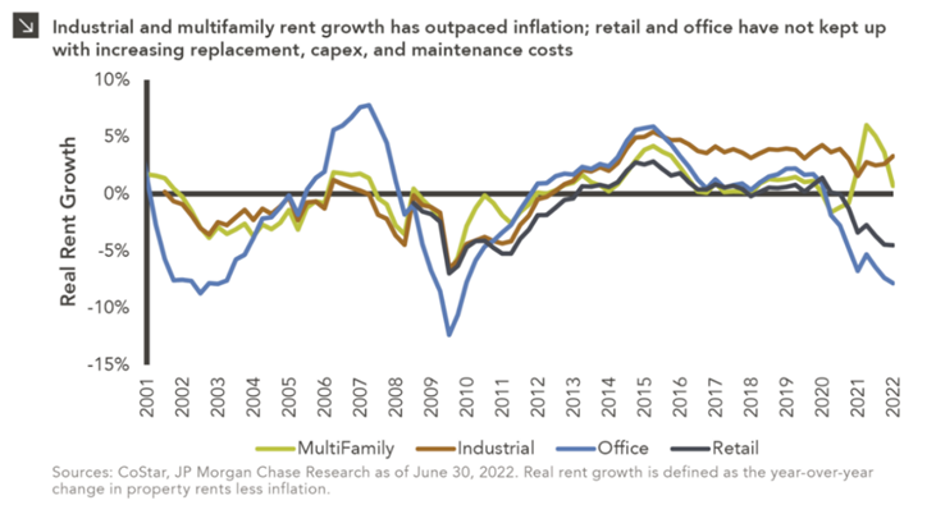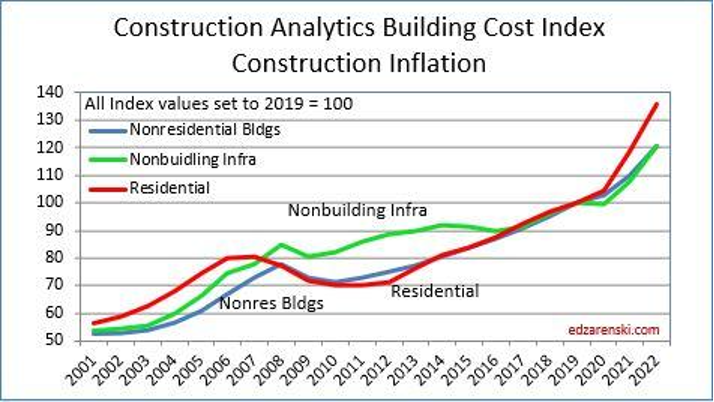This Best Ever blog article is brought to you by BAM Capital, the private equity arm of The BAM Companies, an institutional real estate owner/operator.
There is a growing consensus that rising interest rates will have an adverse impact on multifamily real estate values. That risk is real since there is a correlation between cap rates and interest rates. However, there is a compelling case that multifamily values will remain flat or possibly increase in some markets once we dig deeper into the overall fundamentals.
There are several macro factors in the multifamily space that should benefit values and offset the pain of rising interest rates: 1) the supply/demand imbalance, 2) inflation, 3) high construction costs, and 4) would-be homebuyers continuing to rent.
1. Supply/Demand Imbalance
Let’s look at the current supply/demand imbalance in the multifamily asset class. The U.S. faces a pressing need to build 4.3 million new apartments by 2035, according to a recent study commissioned by the National Apartment Association (NAA) and the National Multifamily Housing Council (NMHC). The 4.3 million apartment homes needed include an existing 600,000 apartment home deficit because of underbuilding during the 2008 financial crisis. More demand than supply places upward pressure on rents, resulting in higher cash flows and potentially higher values. Indianapolis, IN, is a testament to a market where there is a supply/demand imbalance.

2. Hedge Against Inflation
Investing in multifamily assets has long been considered a superior hedge against inflation. Apartments afford owners/operators the opportunity to reset rental rates as frequently as every 12 months, compared to other real estate asset classes with longer-term leases. These short-term leases provide owners/operators with the flexibility to change pricing quickly if operational costs are rising. Historically, apartment rents have tended to outpace inflation rates, as depicted in the chart below, unlike other asset classes.

Source: marquetteassociates.com
3. High Construction Costs
Construction costs have risen dramatically over the past year due to a confluence of events: labor shortages, supply chain disruptions, inflation, etc. By the end of 2022, CBRE’s Construction Cost Index forecasted a 14.1% year-over-year increase in construction costs as labor and material costs continue to rise. Coupling these events with rising interest rates makes it difficult and, in most cases, cost prohibitive for developers to build. This combination reduces supply and further strengthens the supply/demand imbalance, which bodes well for cash flows and real estate values.

Source: edzarenski.com
4. Would-Be Homebuyers Continue to Rent
Nobody likes rising interest rates, but they are having a positive impact on apartment fundamentals. According to the Mortgage Bankers Association, mortgage applications to purchase a home are down approximately 40% from this time last year. Mortgage rates have more than doubled in the past year as the Federal Reserve pushed ahead with its unprecedented campaign of hiking interest rates to subdue inflation.
If people can’t afford to purchase homes because of expensive mortgage payments, they will continue to rent. The larger renter pool helps the demand side of the equation. With supply relatively flat, increased demand will again place upward pressure on rental rates, resulting in higher cash flows and potentially higher real estate values. By way of example, the overall fundamentals in Des Moines, IA, have remained strong this year, which has attracted the eye of institutional capital.

When building a diverse portfolio of institutional-quality apartment communities, it is essential to prepare in-depth fundamental analysis at both macro and micro levels to make informed decisions. Knowing the specifics of each asset is crucial, but it is equally important to understand the overriding themes occurring in the broader and local economy. This information can give operators the utmost confidence in projecting future cash flows and a stabilized yield on cost, a metric that protects investor capital and provides outsized returns.
Time will tell, but here is the real question: Do multifamily fundamentals outweigh cap rate expansion because of rising interest rates? No one has a definitive answer yet, but one thing is certain. There will be no dearth of buying opportunities during these times of economic uncertainty.
About BAM Capital
BAM Capital is the private equity arm of The BAM Companies, an institutional real estate owner/operator. BAM Capital offers its family of investors access to premier real estate investment opportunities, transparent stewardship of capital, a means to achieve portfolio diversification, and tax-advantaged, long-term wealth creation. Learn more.
Disclaimer: The views and opinions expressed in this blog post are provided for informational purposes only and should not be construed as an offer to buy or sell any securities or to make or consider any investment or course of action.



